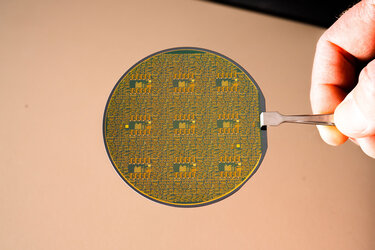

Atom-scale scan of space materials
Thank you for liking
You have already liked this page, you can only like it once!
Internal research fellow Johanna Wessing performing X-ray photoelectron spectroscopy of the topmost skin of a candidate material for space.
This powerful technique enables the analysis of surface structures and composition to a depth of just a few nanometres – a nanometre being a billionth of a metre, or, typically, a few dozen individual atoms.
Exposure to space can be bad for the health of many substances, combining prolonged exposure to vacuum with intense sunlight, radiation and temperature extremes. Its surface is where a material meets the outside environment so this kind of inspection is important: variations in surface chemistry can substantially alter a material’s overall behaviour.
X-ray photoelectron spectroscopy provides not only the unique fingerprint of an element but also its chemical state and information about the nature of surrounding atoms. In addition this process can also check whether a material is truly clean, right down to atomic scale, to avoid introducing any contamination.
The X-ray Photoelectron Spectrometer is one of a comprehensive suite of analysis tools at ESA’s Materials and Electrical Components Laboratory at the ESTEC technical centre in Noordwijk, the Netherlands.
-
CREDIT
ESA-Remedia -
LICENCE
ESA Standard Licence

Acoustic inspection

Pure gold pin for space testing

Discs for fault detection

ESA in miniature

